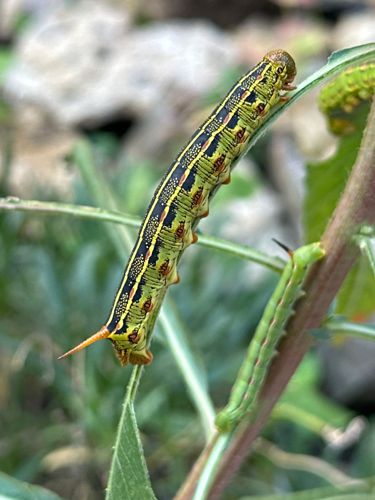Bedstraw Hawk-moth
Scientific Name: Hyles gallii
Order & Family: Order: Lepidoptera, Family: Sphingidae
Size: Caterpillars can reach up to 70-80 mm (2.7-3.1 inches) in length. Adult moths typically have a wingspan of 65-80 mm (2.5-3.1 inches).

Natural Habitat
Found in a variety of open and semi-open habitats including meadows, grasslands, coastal areas, heathlands, fens, gardens, and urban spaces where their host plants are present.
Diet & Feeding
As caterpillars, they are herbivorous, feeding on herbaceous plants, particularly those in the family Rubiaceae (like Bedstraw - Galium spp.), and Onagraceae (like Willowherb - Epilobium spp.), and sometimes other low-growing plants. Adult moths feed on nectar from various flowers.
Behavior Patterns
Larvae (caterpillars) are primarily nocturnal feeders but can be seen feeding during the day. When disturbed, they may rear up their front segments in a sphinx-like posture. They undergo complete metamorphosis, pupating in the soil. Adults are strong flyers and are often active at dusk and dawn (crepuscular) or at night (nocturnal).
Risks & Benefits
Risks: Caterpillars can defoliate host plants, but generally, their impact on cultivated crops is minor as they prefer wild host plants. Benefits: As pollinators, adult moths contribute to the reproduction of various flowering plants. Caterpillars serve as a food source for birds and other insectivores, playing a role in the food chain. They are also indicators of healthy ecosystems.
Identified on: 8/9/2025